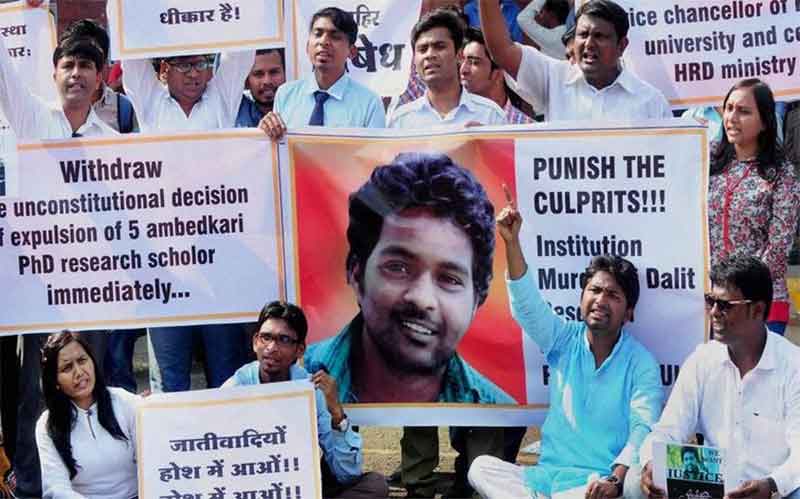
Youth crime stories across Canada are depictions of youth who are unusual and are designed to sensationalize crime and dysfunction. These depictions appeal to people’s sense of despair by focusing on horror, violent behavior, and bystander apathy. (1) Such stories are a reverse morality play that appeals to people’s sense of righteousness and our fear of the real world.
Sensationalized accounts are often aggrandized and contain pervasive messages about the correlations between morality and social status. (2)
Canadian Youth and Crime Reporting of Marginalized Groups
When those in news media write about youth crime and youth misconduct, they have the tendency to attack those who are mostly marginalized. (3) The media tends to present the story with context to lives of such individuals. This means that such patterns of reporting help create or even foster a form of enmity towards the young who are socially and economically at a disadvantage. (4)
A focus in this section is congenital offenders and congenital families, blaming mothers and families, poverty and the pathological family, and race and crime youth. Some of the categories of discrimination which come up in social research and analysis include race, class, and gender. In the context of media accounts of criminal activity among youth, gang criminality is often an identifier for racial profiling a group of the poor and those in subsidized demographics. Furthermore, a representation of such a crime family would include poor families and families of single mothers. (5) This type of representation should be matter of serious concerns to official social policy makers because blame for a crime or criminal behavior may be placed on the most vulnerable people in society. (6) There is also another problem in this type of crime identification. Public actors such as politicians, business people, and the media have the potential to define, identify, and scapegoat vulnerable and identifiable people in society.
(7) This is a problem given that it is the responsibility of legal experts, law enforcement, criminologists, and sociologists to define,identify, and understand crime and the social pathology of crime.
News Media’s Disinformation of Sexual Assault on Vulnerable Women
We found an interesting news article about a young woman that was covered in the news media a number of years ago. Melissa Bruen was a student at the University of Connecticut.
While she walked home one night, Melissa was sexually assaulted as she returned from a party. (8)
A group of men sexually assaulted her in violation of section 265 of the Criminal Code. |By her own account, Melissa Bruen would seem to be a brave woman, powerful, and ultimately successful in defending her life and self. The Hartford Courant, a local newspaper, gave an inaccurate portrayal of the events that took place that night in its description of this assault.
Furthermore, there was not any mention of resistance on the part of Melissa Bruen. In the Courant’s version of the event, she seemed vulnerable and weak. There was little attention paid to her
resolve and strength in resisting and breaking free of a crowd of drunk and abusive men. (9)
The Courant’s reporting leads people to conclude that women are generally attacked by male strangers in public places. (10) Moreover, that women are vulnerable and helpless, and even if they manage to escape rape or a serious assault, they are hysterical, weeping, and calling for male support. (11) This certainly is not an accurate portrayal of what really happens, and leads to victim blaming. Stereotypes associated with women and sexual assaults are only reinforced in | the presence of inaccurate information and a prevalence of ignorance. This should lead us to consider that cultural influences which cause deficiencies and result in dysfunction, along with various subcultures which form social structures, contribute to the creation of criminal behaviors and attitudes.
The UN Convention and Protection of the Rights of Victims
The article attempts to determine and explain the construct of victim, and what —information about women’s responses to sexual assault is available to newspaper readers. Victims are socially constructed, defined, and interpreted in particular ways for certain ends. Research has found that news media present a picture of violence that diverges from the |patterns reported in social science research. (12) This methodology often results in violence being sensationalized, and a distorted sense of real-world patterns. (13)
The UN. Convention on the Rights of the Child is used as a tool in order to analyst and examine the issues which affect youth in various demographics and in society. (14) The rights provided to children and youth include the right to life, the right to survival, the right to develop to the fullest, protect against discrimination of all kinds, the right to live in a safe and healthy environment, the right to expression, and the right to participate fully in family, cultural, and social life. (15) Some of the concepts covered in this convention would allow for a proportionate risk—analysis of what risk is faced by youth and children. We can therefore take adequate steps and actions in order to move at-risk youth from the marginalized demographic. (16) To deal with this issue, we need proportionate social work, legislation, values, regulations, and other systems in place that allow for effective public policies. The outcome would be that youth and children would live in a socially just and safer world. Young men and women would find cultural meaning, belonging, and overall benefit in a society which provides for the well being of its citizens. (17)
We tried to explain and clarify some of the important concepts found in the UN. Convention on the Rights of Child. The Canadian Federal Government has a responsibility to reducing vulnerabilities which compromise the well being of young people.(18) Sexual assaults faced by young women, and even men, are a critical social reality which compromise the well-being of youth and children across North America. Social policy can be used to rationalize social policy and decision-making which would help reduce this risk faced by Canadian youth. Action social research which delves into the social pathology of such crimes and criminal events would go towards the well being of youth and children and provide for life, survival, developing to the fullest, protection against discrimination, healthy environment, right to expression, right to participate in family, cultural, and social life. (19)
References
- Schissel, , “Still Blaming Children”, Fernwood Publishing, 2006, pp.57, 79.
- 3 Ibid. :
- |
- |
- Hollander, J., Rodgers, , “Constructing Victims: The Erasure of Women’s Resistance to Sexual Assault, Sociological forum, V.2, No.2, June 2014, Page. 342|
- Hollander, J., Rodgers, , “Constructing Victims’, Pages. 342-344
- Hollander, J., Rodgers, , “Constructing Victims’, Pages. 342-344
- TIlleczek, K., “Approaching Youth Studies”, Oxford University Press, 2011, pp.56, 132, 133,
Mohammad Momin Khawaja is a Sociologist and a Journalist: Member of the Canadian Sociological Association (CSA), and Member of the International Center for Journalist – ICFJ Global Network, Washington, D. C. USA. A graduate of Laurentian University in Sociology, he writes on current issues of social justice, criminology, philosophy, ethics, history and problems of social welfare system and human development. He is author of numerous publications including, Women in the Ancient World (Lambert Academic Publication, 2023), and his latest book under publication is: Philosophy and Ethics – Dilemmas of Modern Philosophy and Ethics. He recently published: “North American Colonization of Indigenous People, Cultures and System of Social Welfare.”
:https://www.uncommonthought.com/mtblog/archives/2023/05/26/north-american-colonization- of-indigenous-people-cultures-and-system-of-social-welfare.php.










































